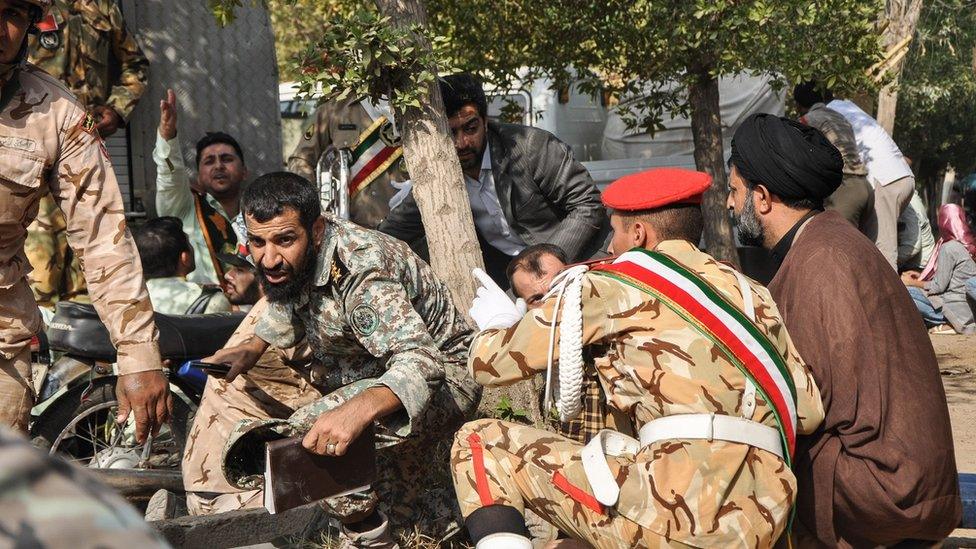Iran fires missiles at militants in Syria over Ahvaz attack
- Published
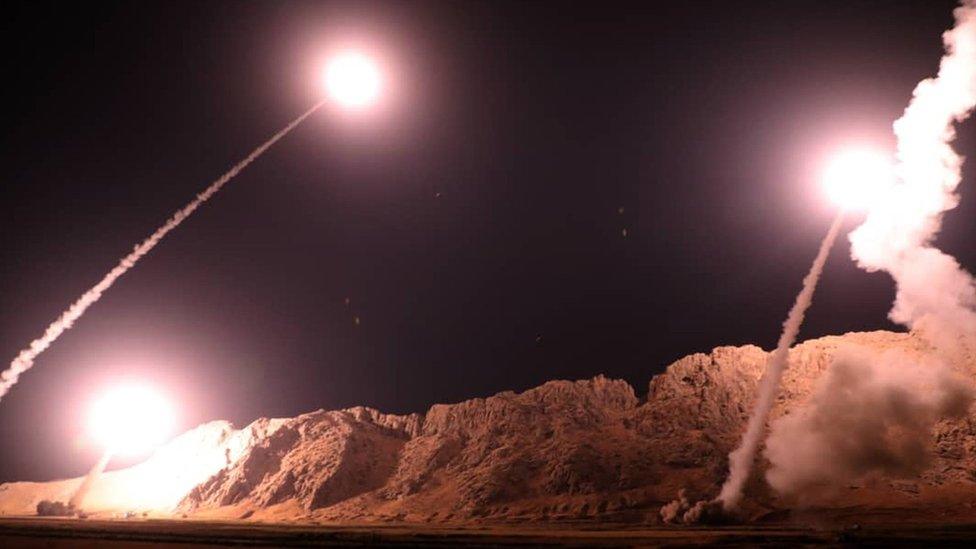
The Revolutionary Guards said the missiles travelled a distance of 570km (354 miles)
Iran's Revolutionary Guards say they have fired missiles at eastern Syria targeting the ringleaders of the deadly attack on a military parade in Ahvaz.
A statement said "many terrorists" were killed or injured in the strikes.
Iranian state television suggested that the missiles hit an area close to the border town of Albu Kamal where Islamic State militants are known to operate.
IS and ethnic Arab separatists from Ahvaz both claimed the 22 September parade attack, in which 25 people died.
The Iranian government has alleged that the assailants were jihadist separatists supported by Gulf Arab allies of the United States.
US Defence Secretary Jim Mattis has dismissed the allegation as "ludicrous".
The moment gunmen open fire on an Iranian military parade
The Revolutionary Guards announced that its aerospace forces' missile unit had "targeted a base of the ringleaders of Ahvaz terrorist crimes to the east of the Euphrates [river] in Syria, external with a number of surface-to-surface ballistic missiles" at 02:00 on Monday (22:30 GMT on Sunday).
In addition to causing casualties among the militants, the strikes also reportedly destroyed infrastructure and ammunition stockpiles.
"Our iron fist is prepared to deliver a decisive and crushing response to any wickedness and mischief of the enemies," the statement added.
The Revolutionary Guards did not say where in western Iran the six missiles were launched, but revealed that they travelled a distance of 570km (354 miles).

Iran's Fars news agency reported that they were Zolfaghar and Qiyam missiles, external, and that on at least one of them was written "death to America", "death to Israel" and "death to Al Saud", a reference to Saudi Arabia's ruling family.
Drones also bombarded IS positions after the strike, according to the statement.
Iran has sent troops to Syria to support the government in the country's civil war. It has also armed thousands of militiamen fighting alongside the Syrian army.
Syria's official Sana news agency did not immediately mention the strike, but the Syrian Observatory for Human Rights said it had received reports of violent explosions at dawn, external in a pocket of territory controlled by IS on the eastern banks of the Euphrates north of Albu Kamal.
The UK-based monitoring group said it believed missiles had hit the headquarters of IS in the Hajin area, and that there was no information about casualties.
A US-backed alliance of Syrian Kurdish and Arab militias began a ground offensive to capture the Hajin pocket three weeks ago. The US military estimated that there were between 1,500 and 2,000 militants in the area.

The Ahvaz attackers shot troops, bystanders and officials sitting on a viewing stand
It remains unclear who was behind the Ahvaz attack, which saw four gunmen wearing military uniforms open fire at troops, bystanders and officials during an event marking the 38th anniversary of the start of the Iran-Iraq war.
The al-Ahwaz National Resistance, an umbrella movement for Arab separatist groups fighting for independence for Khuzestan province, issued a claim and gave details about one of the attackers.
IS also claimed the shooting and published a video showing three of the gunmen being driven to the military parade in a car. However, they did not state that they were members of the jihadist group or pledge allegiance to its leader, as is common in such pre-attack videos.
In June 2017, the Revolutionary Guards said they had fired missiles at IS militants in Syria after the group said it carried out an attack on the Iranian parliament in Tehran and the mausoleum of Ayatollah Khomeini that left 18 people dead.
- Published24 September 2018
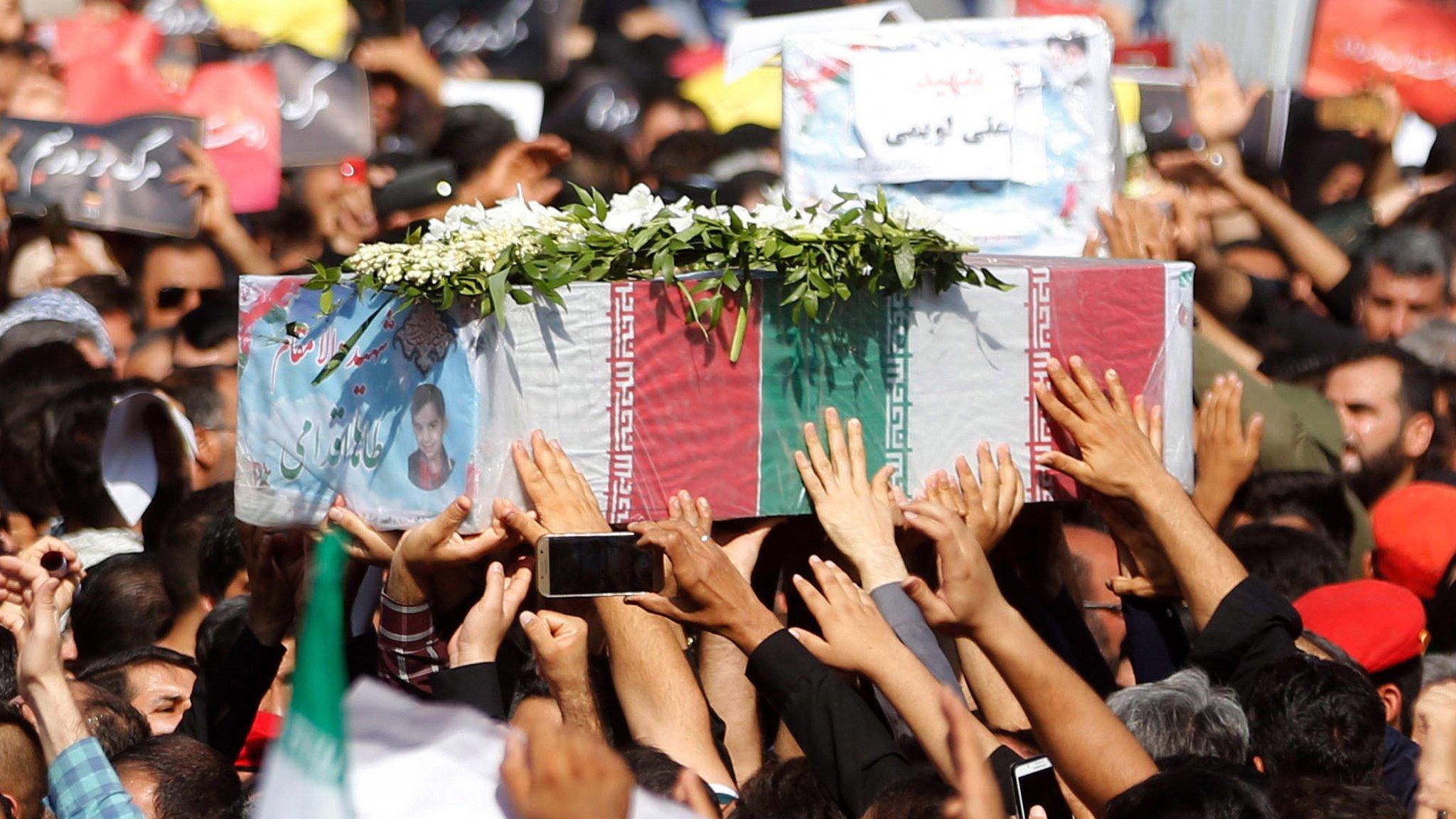
- Published23 September 2018

- Published23 September 2018
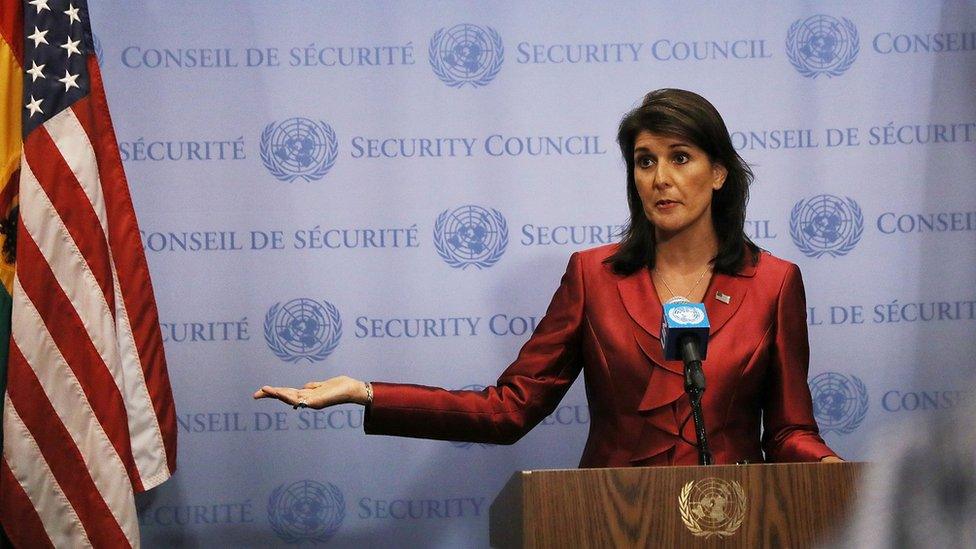
- Published22 September 2018
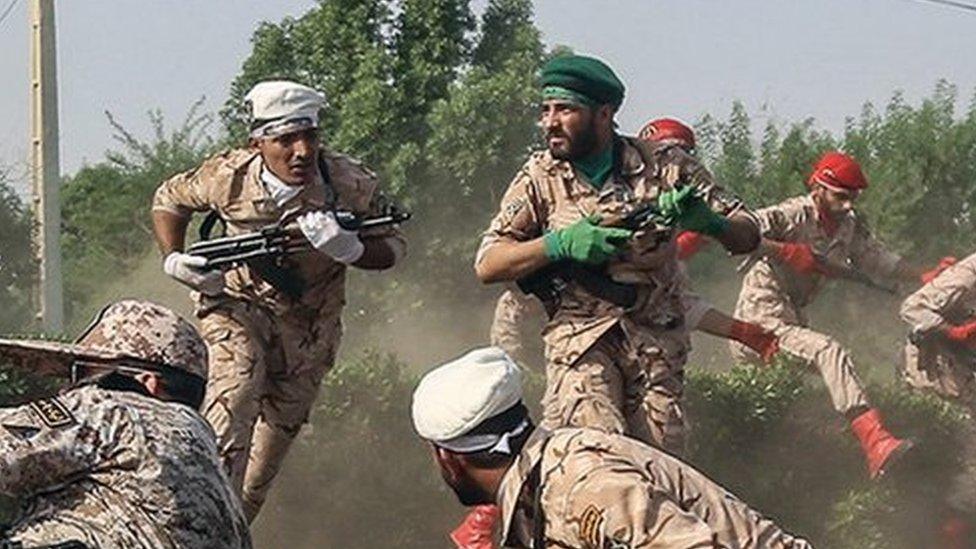
- Published22 September 2018
